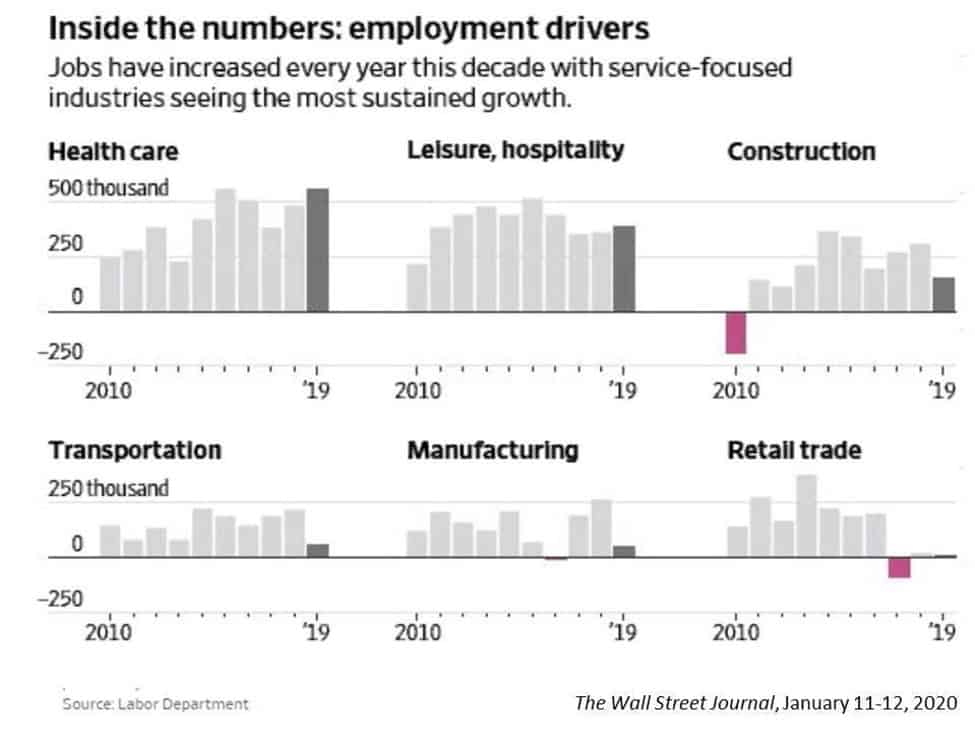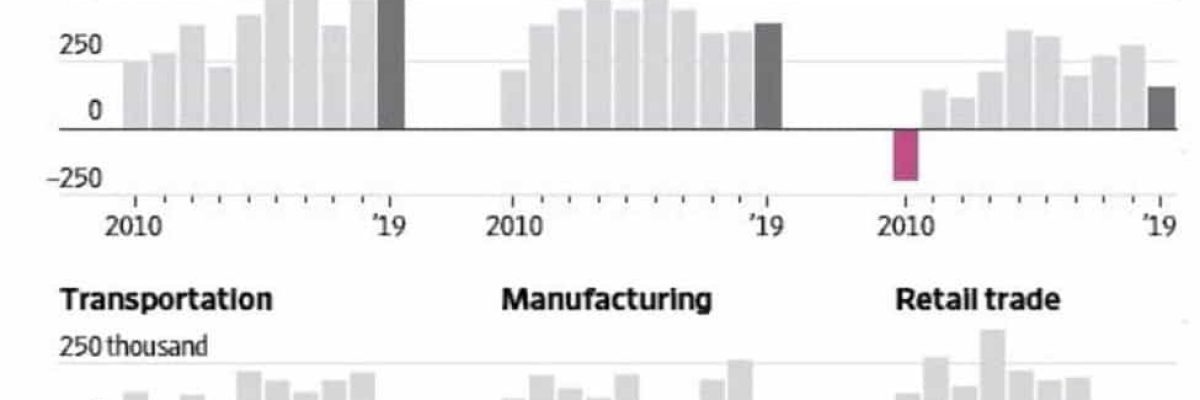The year 2020 — marking the first full year after the twentieth anniversary of the publication of The Experience Economy — seems a suitable milestone to see how the economic impact of experiences is being talked about and realized – in vital statistics. Clearly, the Experience Economy is not emerging, no, it’s fully arrived!
Employment Numbers Showing The Economic Impact of Experiences
The Wall Street Journal reported on U.S. Labor Department statistics for job growth over the last year and the last decade. Three key sectors of Education/Health Care, Leisure/Hospitality, and Construction⎯representing dominant transformation, experience, and places-to-spend-time businesses⎯far outpaced Manufacturing, Transportation, and Retail⎯the supply chain of goods businesses. See the full story here: https://www.wsj.com/articles/december-jobs-report-11578657600 The chart below speaks for itself. And while WSJ still refers to these industries as service-focused, we know there is something else actually happening.

Weeks earlier, the WSJ reported, “Concert-Ticket Prices Rose 55% in a Decade.” https://www.wsj.com/articles/why-concert-tickets-are-so-expensive-11577371024 (This is almost triple the cumulative inflation rate over the last ten years of 19.5%.)
It’s something you see more and more of – the consumer demand for experiences drives up prices far more than advertising of traditional goods and services ever could.
Companies who are not in this game need to get in it now and start competing for customer time, attention, and money.
Look, And You Will Find The Economic Impact of Experiences Everywhere
As you read through your monthly magazines, daily news feeds, LinkedIn posts, or even just your local newspaper – take stock of the economic impact of experiences and the ways in which the Experience Economy is manifesting itself in ways obvious and not-so-obvious. A deeper look into almost any market phenomena or business announcement will reveal a tie back to this changed sensibility of consumers.



